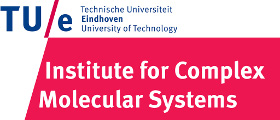Team:TU-Eindhoven/Collaboration
From 2013.igem.org



Collaboration
Purdue iGEM team: Characterization Standard for parts registry
Concerned and aware that the current iGEM registry for characterization of genetic parts has some opportunity areas, the Purdue iGEM team is working on a proposal for a standard characterization protocol. In order to do so, they need the input and perspective from as many teams as possible. We are proud to say that the TU/e iGEM team is part of this collaboration project, working together with teams all around the world to create a standard characterization protocol.
So far, we have:
- Participated on a video conference with the Purdue iGEM team in order to discuss the protocol draft.
- Reviewed and analyzed the draft,and consequently passed on our suggestions for improvement of the protocol to the Purdue iGEM team.
- Filled in a series of surveys made by the Purdue iGEM team about the current registry and the protocol draft.
We are looking forward to keep working with them and the other teams involved in this exciting and ambitious project!
Here we give a list of the documents that we created for the collaborations.
- Datasheet BBa_K1123013 and Protocol BBa_K1123013
- Datasheet BBa_K1123014 and Protocol BBa_K1123014
- Datasheet BBa_K1123015 and Protocol BBa_K1123015
- Datasheet BBa_K1123016 and Protocol BBa_K1123016
- Datasheet BBa_K1123017 and Protocol BBa_K1123017
- Datasheet BBa_K1123018 and Protocol BBa_K1123018
- Datasheet BBa_K1123019 and Protocol BBa_K1123019
- Datasheet BBa_K1123020 and Protocol BBa_K1123020
- Datasheet BBa_K1123021 and Protocol BBa_K1123021
Datasheet BBa_K1123013 and Protocol BBa_K1123013 Datasheet BBa_K1123013 and Protocol BBa_K1123013
iGEM Copenhagen: Bricks of Knowledge
The Copenhagen iGEM team has set into motion a great initiave called Bricks of Knowledge. As the name says, the initiative is all about collecting knowledge in bricks (videos). The idea behind it is to provide the new teams and pretty much the whole iGEM community with important information related to the competition. The way they implemented it was by inviting other iGEM teams to make a video about any topic they find relevant, it could be anything going from fundraising and creating your team's wiki to lab and modeling techniques. We thought this was a very interesting project, so we decided to leave our footprint on this project and made our brick about autoclaving.
 "
"



